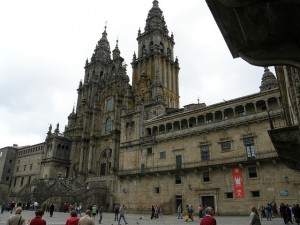The Camino de Santiago or Saint James’ Way is one of the most important Christian pilgrimage routes in Europe. Every year thousands of people come from all around the world with the aim to get to the city’s cathedral in Santiago de Compostela and to visit the apostle Santiago’s grave.
For many students who come to study Spanish in Spain, to undertake the Camino can be an adventure and an unforgettable experience. It is a way to learn a new language while discovering the nature, art and history, of a pilgrimage that has been carried out since the Middle Ages.
According to the Tourism Studies Institute from Galicia, one in four people cover the Camino de Santiago motivated by the visit of the historic-artistic heritage, one out of five to do sports, and up to 17% does it for fun. A third part does it for religious reasons.
There are many routes that go to Santiago but the most famous one is the French route, which starts in Spain from the locality of Roncesavalles (Navarra) and crosses the cities of Pamplona, Logroño, Burgos and León, before getting to its destination Santiago de Compostela, these cities figure in Spanish in Tour. There are numerous routes that have been created in Spain, the main ones are: the Aragonese route, the Basque one, the north, the primitive, the silver route, the sanabrés, the Fisterra and the Camino Portugués. Many other routes start from all of Spain and the majority join the French route to continue towards Santiago de Compostela. Hereafter we leave you a map with all the routes that exist in Spain:
There is a saying that “The Camino de Santiago starts at everyone’s home”, if you are planning to come to study Spanish in Spain or if you are undertaking a Spanish course in our country, covering the Camino is a big opportunity to live an adventure that can’t be explained, you need to experience it.
Image cathedral. Ramella. http://bit.ly/Qduvy5









